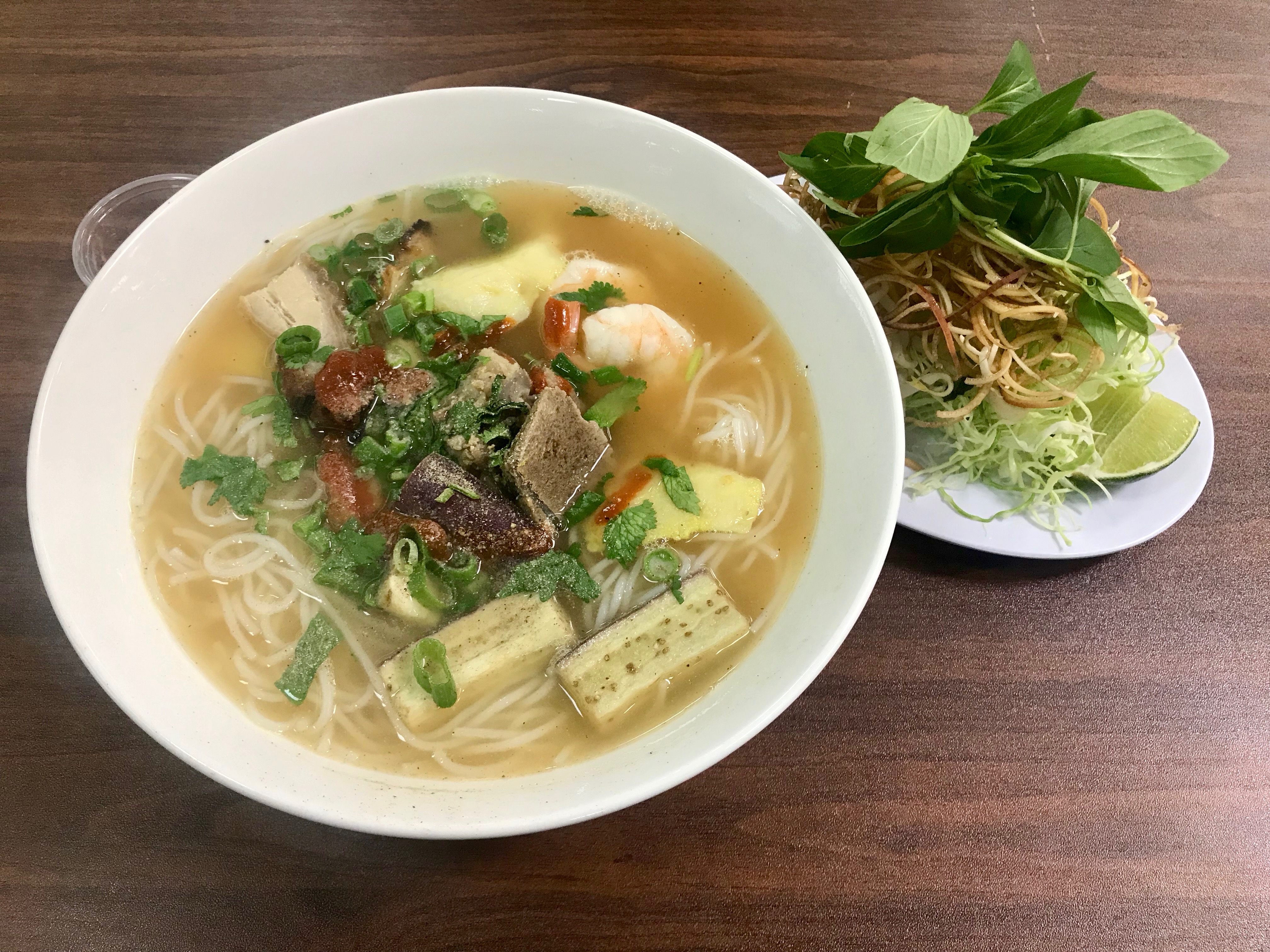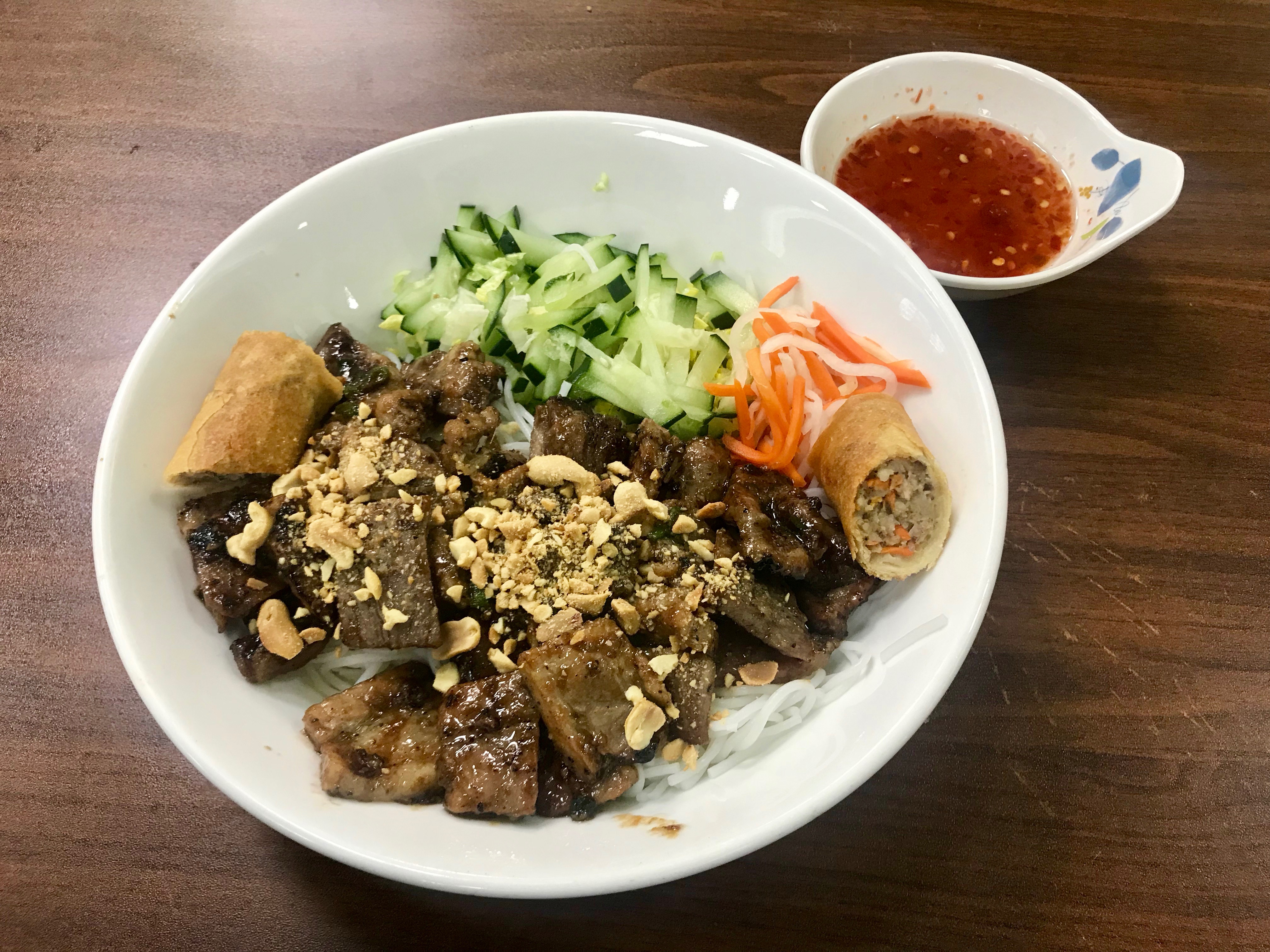There’s one sure way to tell when any nation’s cuisine has become mainstream in the United States: It occurs the moment the cognoscenti start differentiating between the cuisines of the country’s various regions. With Italian food, those distinctions have existed for decades. Popular “red sauce” Italian has its roots in immigrant traditions from Sicily and southern Italy, while northern Italian fans might celebrate risotto and osso bucco. The same has happened more recently with Chinese restaurants branching out beyond familiar Cantonese classics.

Regional differentiation is also relevant with Vietnamese food, and it’s not just about the classic distinction between north and south that divided the country during two decades of conflict. Almost everyone knows that Hanoi is associated with pho, the celebrated soup of beef and thin rice noodles, and Saigon is generally thought to have some of the world’s best street food. What about the middle of the country, though? For a vertically elongated nation like Vietnam, the middle is Hue, the historic former capital located roughly at the midpoint of its north-south axis.

Hue Gourmet is an obviously-named restaurant serving that region’s own specialties. It’s one of several tenants within the small food court at Mekong Plaza, a short walk from the Sycamore / Main light rail station in west Mesa. As with its neighbors at the north end of the shopping center, it’s an informal order-at-the-counter place with its menu displayed overhead. The seating at colorful tables is shared with neighboring restaurants. Be patient when waiting at the counter. Often, the staff are in back cooking but will come out to the front as soon as they are able.

Although Hue is sometimes known for its vegetarian traditions, the menu here favors meat. The cha te pork skewers come wrapped in banana leaves and look and taste like something halfway between a hot dog and a cylinder of pate. Banh gio, also enclosed in banana leaves, are pyramid-shaped dumplings in which a gelatinous rice dough encloses a layer of mixed ground pork and shrimp with a hard-boiled egg at the core. Banh loc la are smaller translucent dumplings, smaller in size but repeating the pork-shrimp mix and banana leaf covering.

Slightly less meaty but equally tasty are appetizers made of flat, thick rice noodles. Banh beo are essentially rice coins topped with shrimp flakes and served with a fish oil sauce sprinkled with sliced chilies. Bahn nam are larger dumplings of rectangular shape stuffed with shrimp flakes and, once again, steamed in banana leaves. Staff are happy to show customers how to unwrap the leaves, anoint the dumplings with sauce, and then slice each one into manageable pieces. Most of these items come several to an order, making them ideal to share as appetizers.

Many of Hue Gourmet’s customers order a big, steaming bowl of bun bo hue, the restaurant’s signature dish. This is not pho, but instead a meaty soup made with thicker, more cylindrical noodles combined with sliced beef, slivers of “pork loaf” (sold in rolls at the counter), pork knuckle, and cubes of congealed pork blood for extra flavor. The table salad served with the soup includes herbs, shredded cabbage, and bean sprouts. On the side, there’s one container of chili oil and another of shrimp paste for a taste full of salt and unami.

Continuing the exploration of Vietnamese food beyond ubiquitous pho, as wonderful as that can be, there are several other noodle soups worth exploring. Bun man uses the same noodles as bo bo hue, but this soup of roasted eggplant, tender eggplant, and shrimp is based on a broth lighter in color but equally spicy and intensely flavored. Bun mang vit pairs noodle soup with a plate of sliced duck meat on a bed of cabbage. A duck heart is found in the broth in the soup bowl. Banh canh cua is a soup made with thicker udon noodles mixed with crab and shrimp.

Beyond soups, there are several dry noodle entrees. Bun thit nuong is an ample bowl of rice noodles topped with grilled pork and pickled vegetables with the option to add a shrimp egg roll for a dollar. It is perhaps the least threatening item on the menu for novices, but the spicy red pepper sauce served on the side offers a kick for those who seek it. Mi quang is an entree based on a thicker style of noodle served with pork, shrimp, vegetables, and a quail egg. A bit of broth flavored by turmeric and sesame crackers add some additional complexity to the dish.

There is one dessert on the menu: che khuc bac. It’s a cold, soup-like dessert full of slivered almonds, plain jelly, crushed ice, and longan, a tropical fruit similar in taste and texture to lychee. Refreshing and light, it’s a good follow-up to the more spicy dishes. As with all the food court tenants at Mekong Plaza, there’s no liquor license at Hue Gourmet. Distinctive beverages here include vibrant passion fruit juice with crunchy seeds within, passion fruit tea, salted plum soda, potent Vietnamese coffee with condensed milk, and soy milk served hot or cold.

Although Hue Gourmet’s is a small stall, its kitchen produces not only food for consumption on site, but also party trays and even big batches of bun bo hue for ten people. As an outpost representing Vietnamese regional dishes now gaining some local exposure, Hue Gourmet doesn’t water down its food for American tastes and may not be suitable for picky eaters. On the other hand, it’s a new adventure in southeast Asian cuisine for anyone wanting an experience beyond pho, banh mi, and other dishes that have now become part of the mainstream.
66 S. Dobson Rd., Mesa AZ 85202

